Felix Quinonez
Where do you live: Brooklyn, NY.
Your education: BFA Hunter College, studied illustration at SVA.
Describe your art in three words: Melancholy, personal, meticulous.
theneonbulletin.com | Instagram
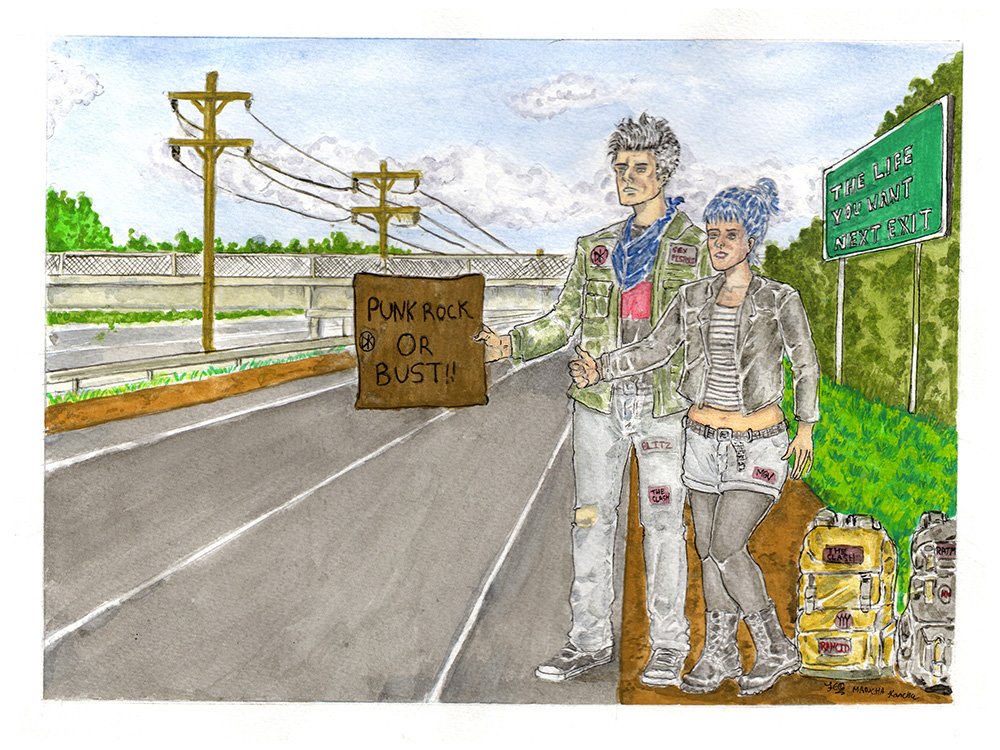 Felix Quinonez | Next Exit
Felix Quinonez | Next Exit
Your works often combine autobiographical elements with fantasy and science fiction. How do you balance these different elements in your storytelling?
For me, the autobiographical element is the most important. I often use the science fiction elements either as a catalyst for the story or to add visual flair to the piece. But ultimately, they are grounded in the emotional core of the autobiographical aspects of the work.
What inspired you to create your self-published comic books and graphic novels? How has the response been from your readers?
Comic books were my introduction to the world of art. I grew up reading comics and trying to recreate my favorite panels. Because of this, I always aspired to create my own comics and graphic novels.
The great thing about comics is that it really is possible to sit in your apartment and create a whole comic book or graphic novel. However, because of that, it can be hard to get your work seen. Although I’ve never had any mainstream success with my comics, I have enjoyed a personal connection to what little readership I have.
Over the years, I’ve had people discover my work through social media, and aside from getting my work to people I wouldn’t have otherwise come into contact with, I also wound up making surprising connections. People have reached out to me through email to let me know how much they’ve enjoyed my work or to tell me they related to something and that it resonated with them.
I’ve also had the fortune to connect with other artists whose work I’ve enjoyed and has influenced my own. I also wound up collaborating with a couple of them, who then became close friends of mine.
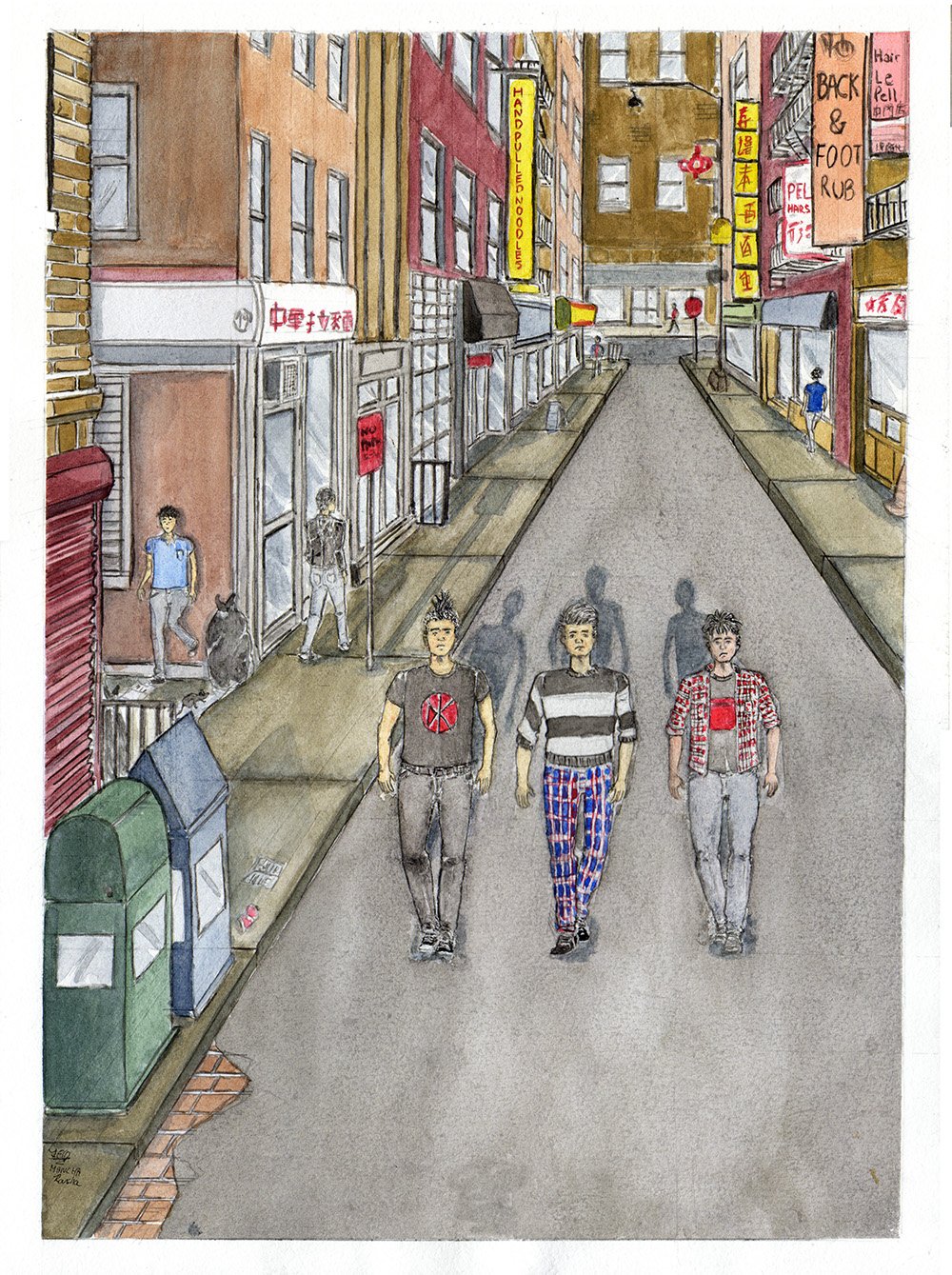 Felix Quinonez | Punks Like US
Felix Quinonez | Punks Like US
NYC is clearly a big influence on your art. How do you think living in New York has shaped your artistic vision?
Living in New York City has played a huge role in shaping my artistic and personal identity.
Before moving to New York City, I had never considered myself an artist; I had just thought of art as a hobby I enjoyed. However, the city has a way of changing you. It’s hard not to be inspired when inspiration is all around you.
You can be anyone in New York City, leaving behind small-town inhibitions. Knowing that others are on a similar journey encourages you to keep chasing your dreams. The longer you stay here, the more it becomes a part of you. A city block can become a portal to the past, a coffee shop, a window into your soul.
When you see a bit of NYC in my work, it’s a love letter to the city but also to moments and people in my life. In a way, it’s almost like a self-portrait of me and different times in my life.
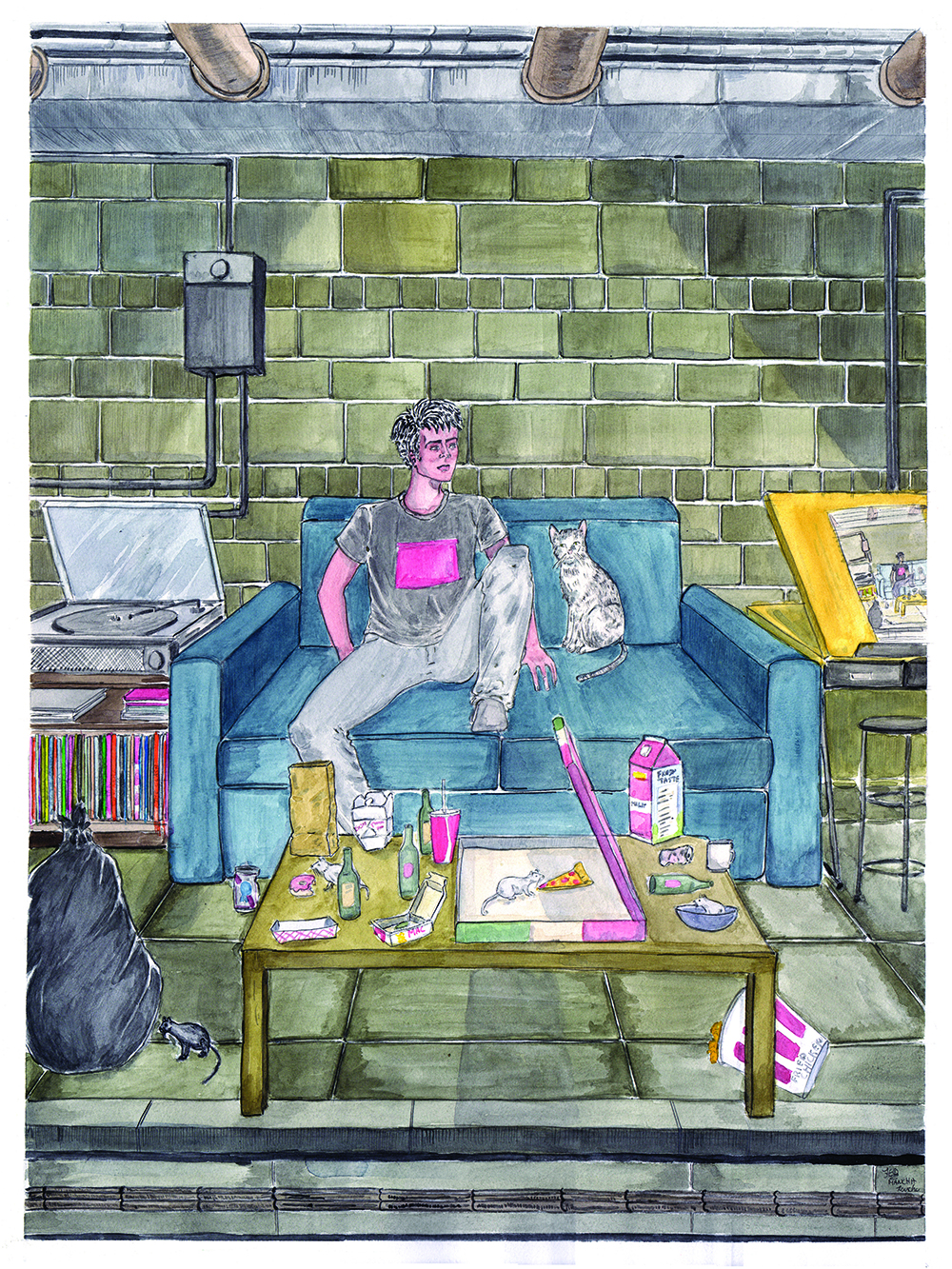 Felix Quinonez | Im With You
Felix Quinonez | Im With You
Can you tell us more about your process of creating a piece? Do you start with a story idea or a visual concept?
I’ll often start with a thought or idea that pops into my head, as they tend to do. I think most of us have that. We’re walking down the street; suddenly, we see, hear, or smell something that triggers a thought. However, I spend a lot of time in my head so I never dismiss these seemingly random ideas. It could be something as simple as a line in a song that’ll inspire an image in my mind or remind me of a time, person, or thing. I tend to follow these sparks of inspiration wherever they may lead me. Sometimes, that becomes a painting, a story, or a comic book, or sometimes, it becomes nothing. But I always give myself the opportunity to find out.
How did your time studying illustration at the School of Visual Arts influence your style and approach to art?
I tend to think of my art as before and after SVA. On a practical level, my technical skills improved dramatically after studying there. However, I was also fortunate to have teachers like Sal Amendola, Tom Motley, and Nelson DeCastro, who helped demystify challenging topics and, more importantly, inspired me. They changed how I think about and make art and how I see myself as an artist.
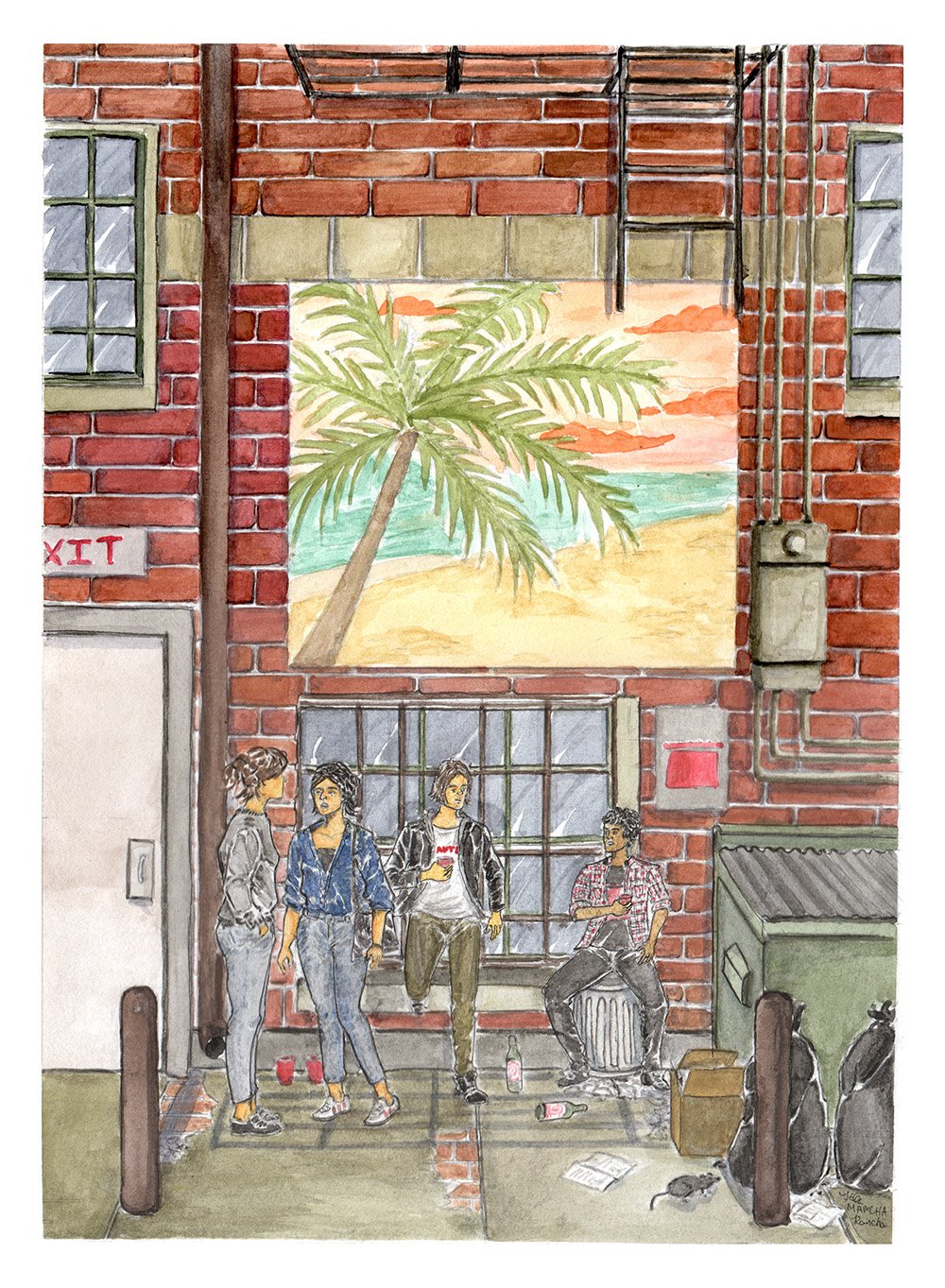 Felix Quinonez | Let’s Leave this Town
Felix Quinonez | Let’s Leave this Town
In your work, we see a lot of urban settings and subcultures. What draws you to these themes, and how do they connect to your personal experiences?
Growing up in a small town, I’ve always been drawn to NYC. As a kid, I practiced Tae Kwon Do, and to proceed to the next belt level, I had to come to the headquarters in Manhattan to take the test in front of the grandmaster, Duk Sung Son. I always looked forward to taking the trip with my cousin and his dad; after the test, we’d usually go to a nearby diner for food. I’d catch a small glimpse of the city on our brief walks. Even as a kid, I was enthralled by the loud, hypnotic symphony of NYC sidewalks. It felt like a different world than the small Long Island town I lived in at the time. I loved watching TV shows and movies with characters living in cool NYC apartments, leading exciting lives, and I’d imagine myself, one day, living the same way.
Even after living in NYC for all these years, I’m still in awe of it all. Sometimes, I stop to think about how happy my younger self would be to know I’m actually doing some of the things I used to dream about.
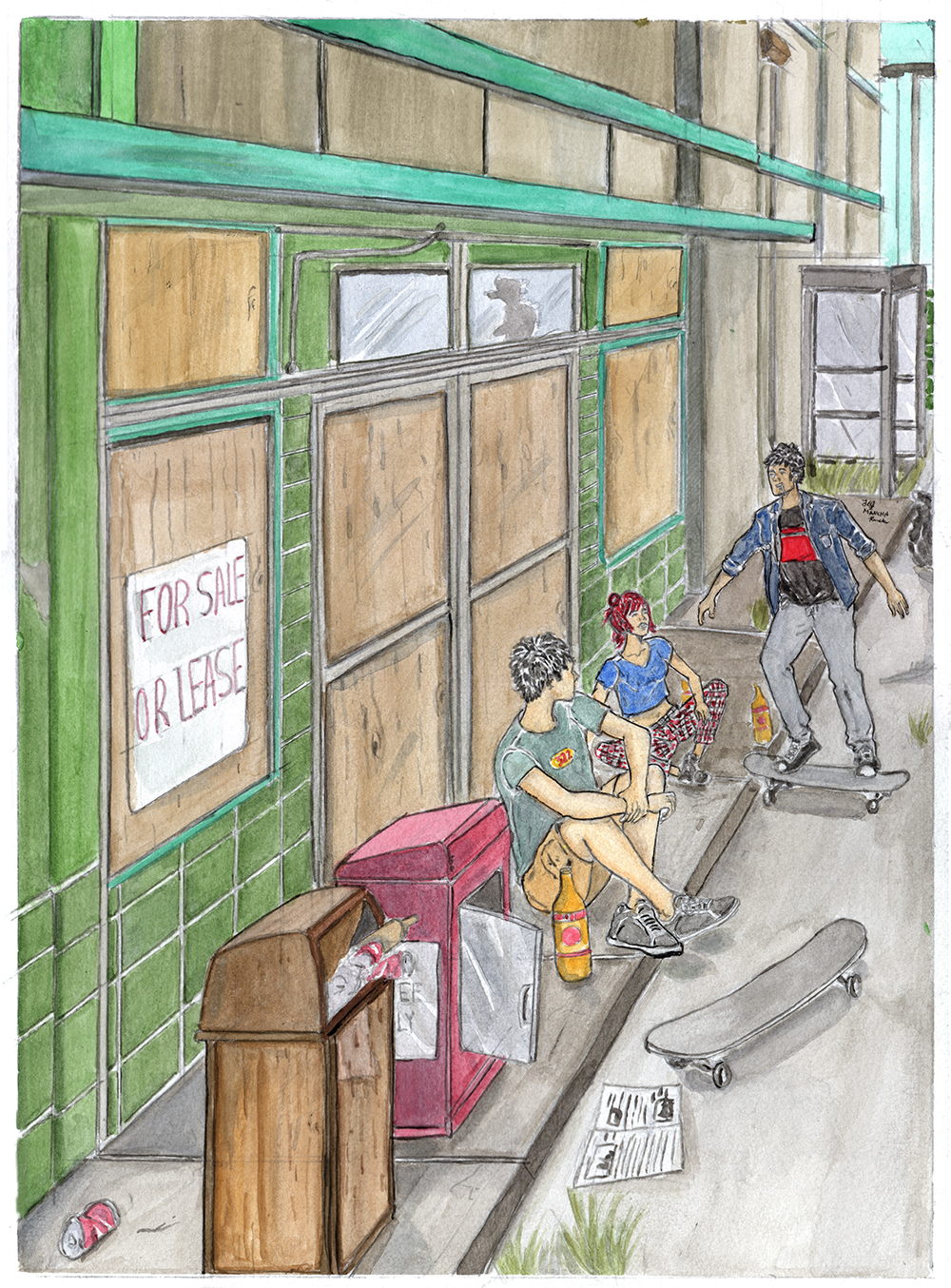 Felix Quinonez | Let’s Get Out of This Town (While We Still Have Time)
Felix Quinonez | Let’s Get Out of This Town (While We Still Have Time)
Many of your pieces include scenes with a sense of melancholy or loneliness. Is this an intentional mood you aim to convey, or does it naturally emerge from your creative process?
I don’t think that’s something I consciously try to convey; I think it’s just part of who I am and it organically appears in my work. I also believe that, generally speaking, sad or melancholy moments inspire me more. These are the things that I tend to think about longer and feel the need to work through with my art.

Leave a Reply
You must be logged in to post a comment.